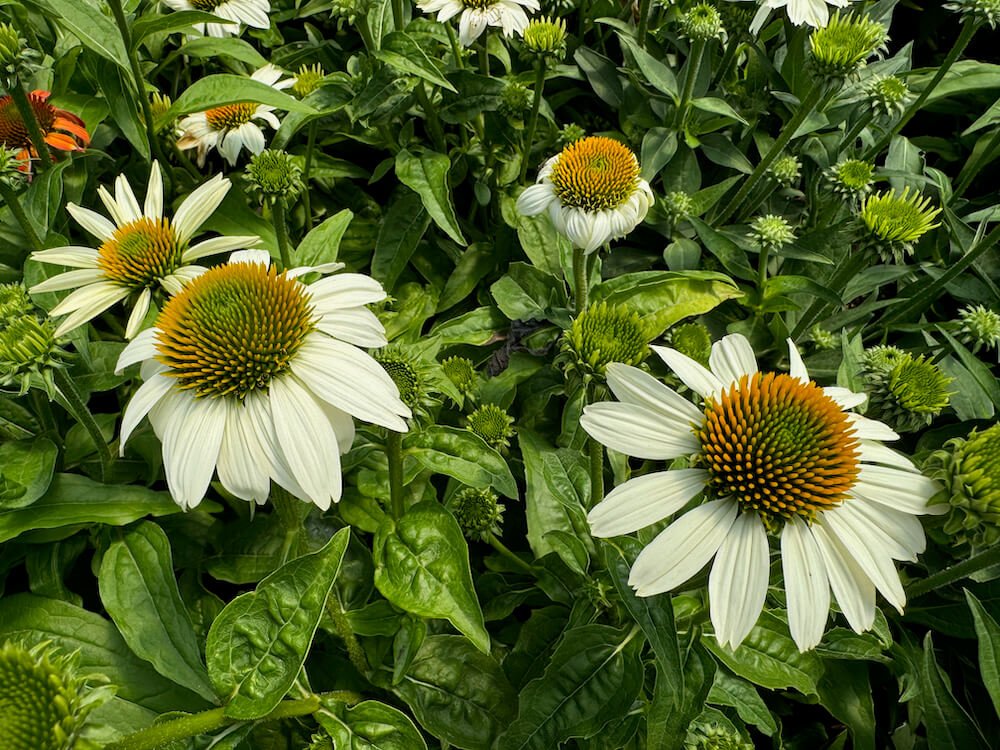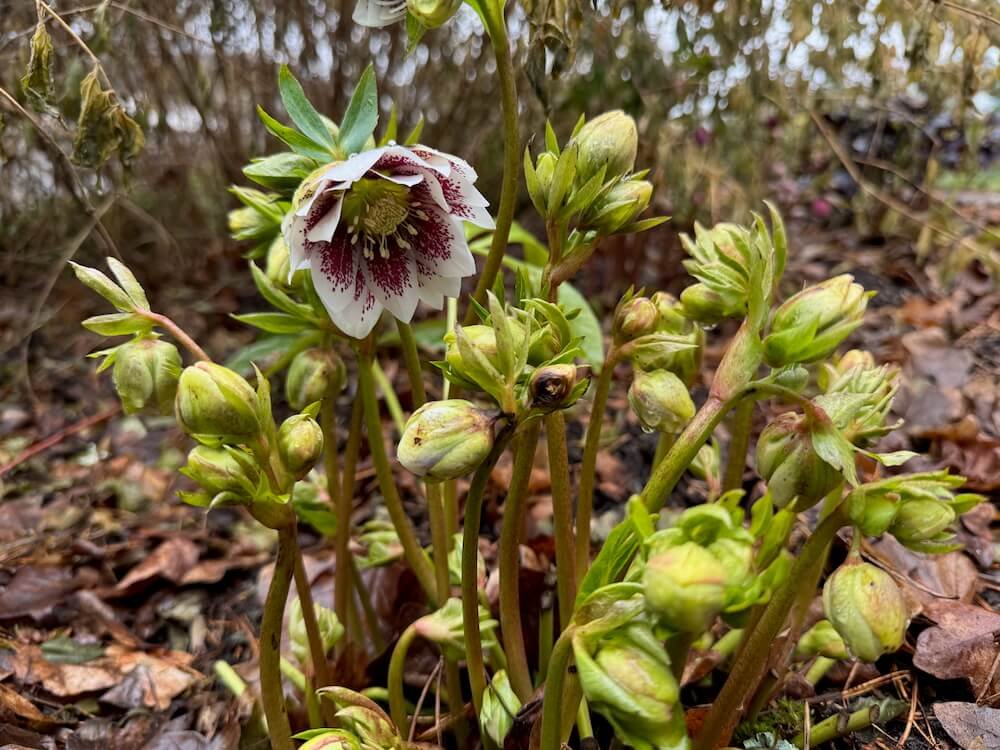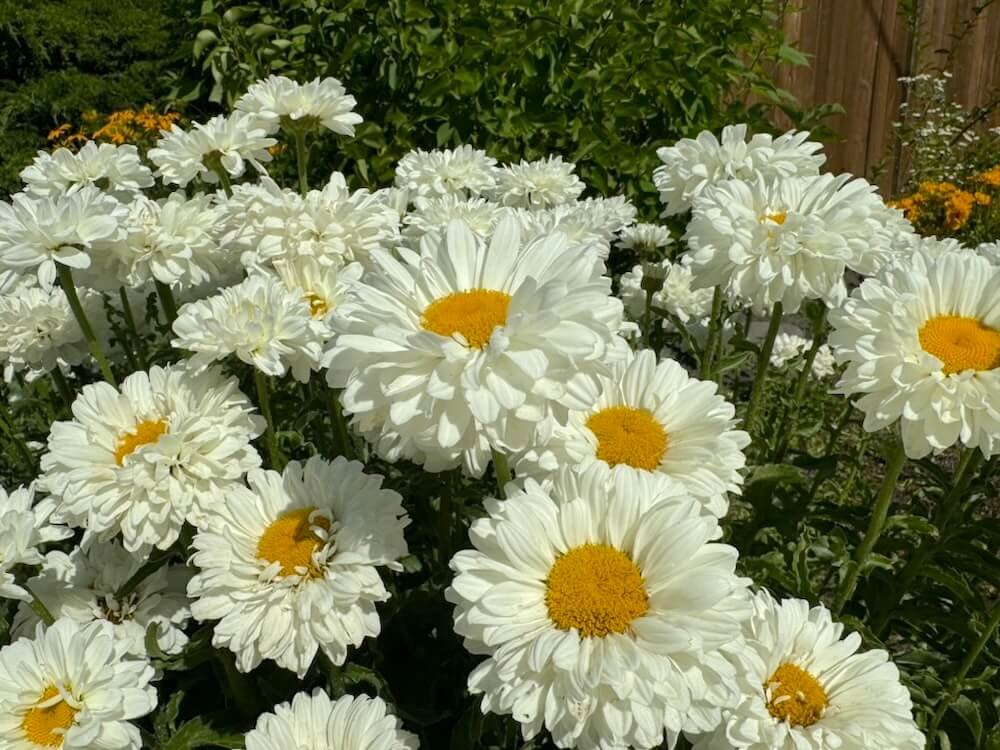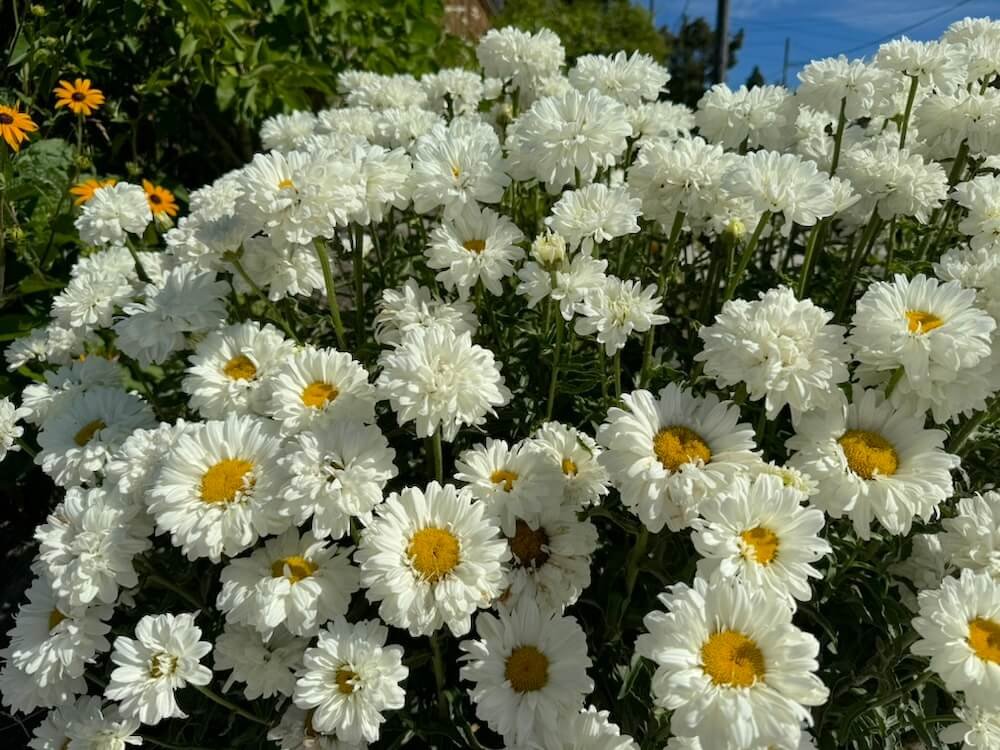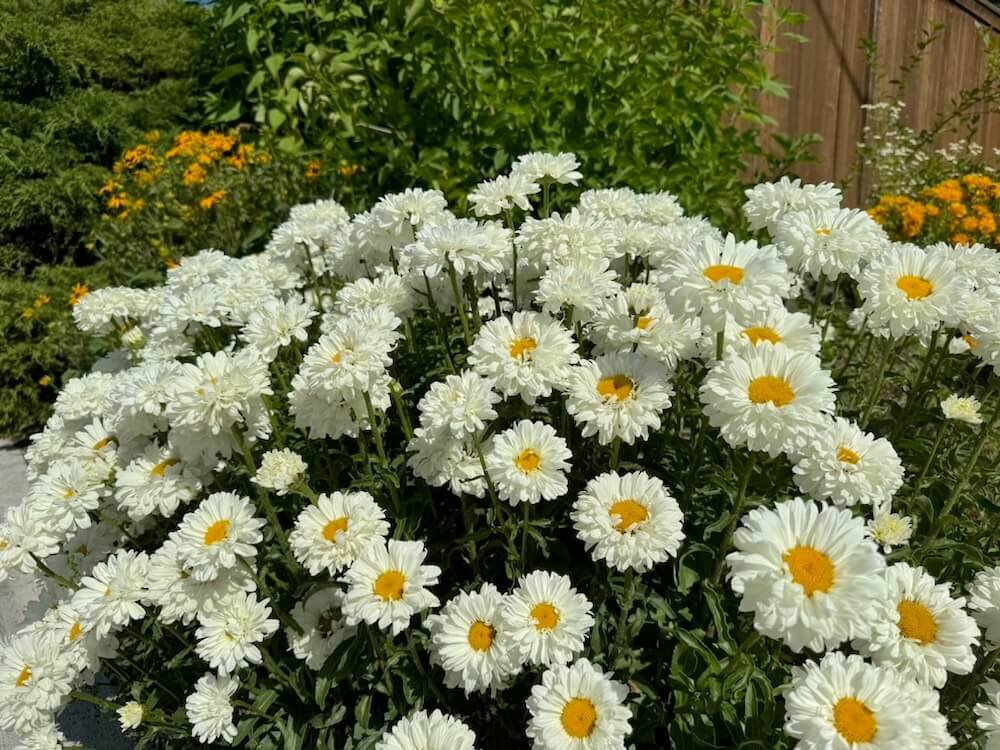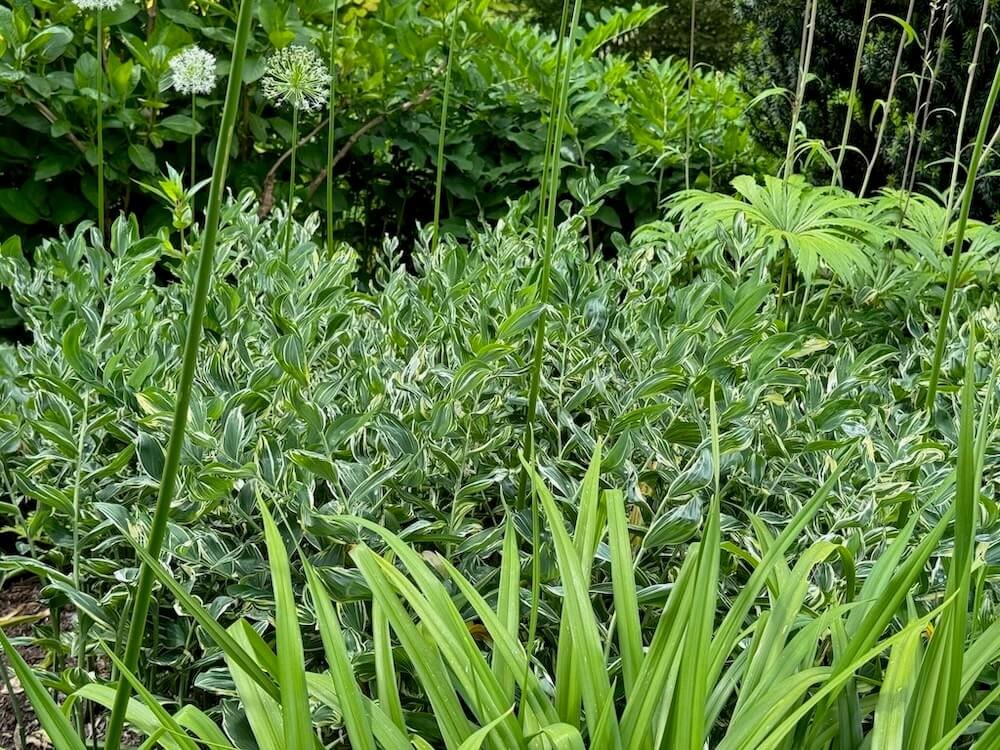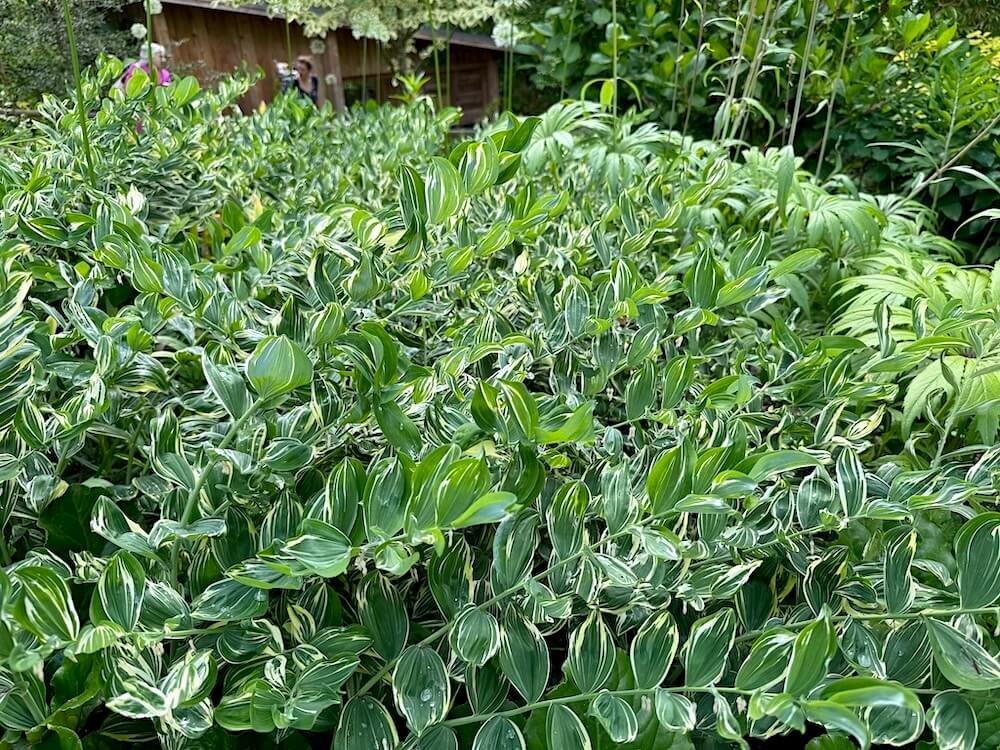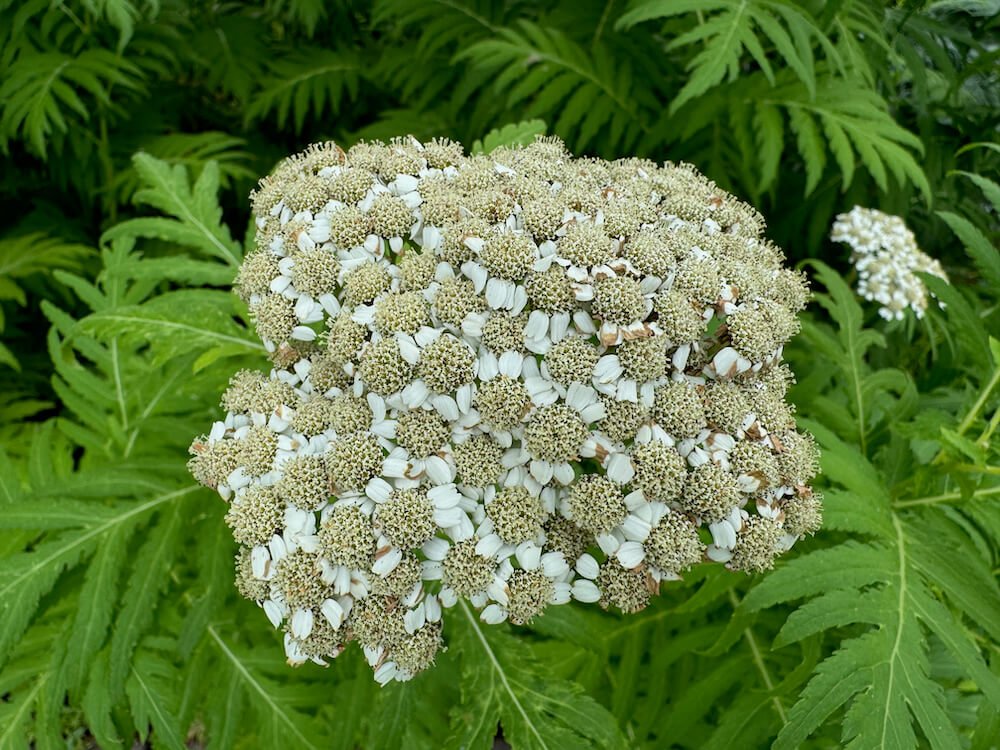 Image 1 of 5
Image 1 of 5

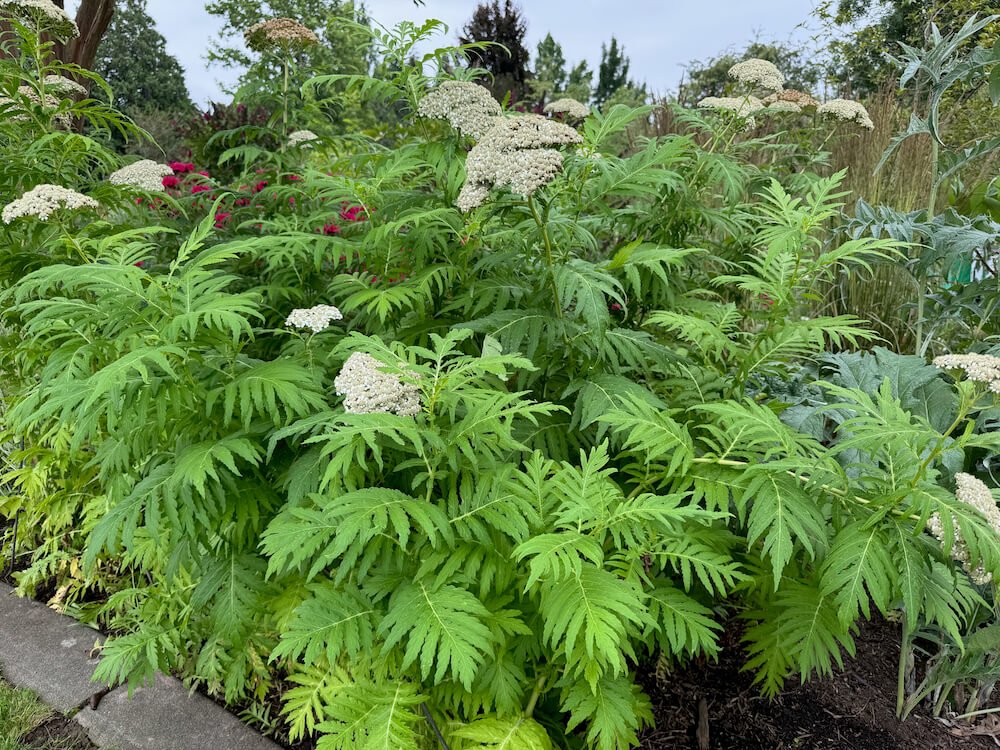 Image 2 of 5
Image 2 of 5

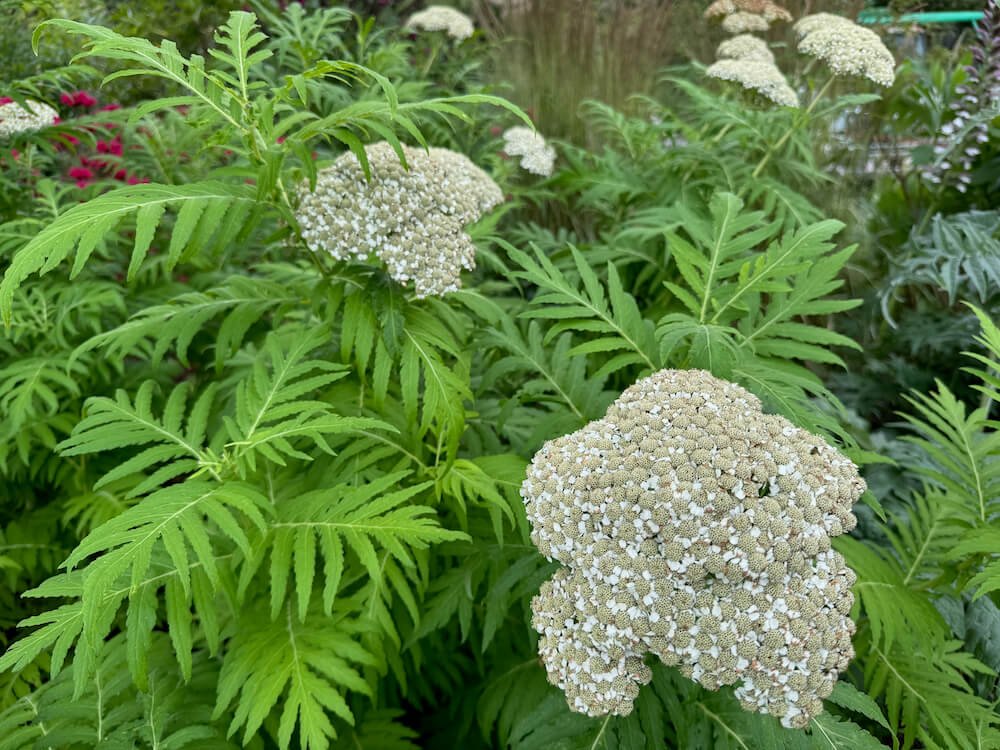 Image 3 of 5
Image 3 of 5

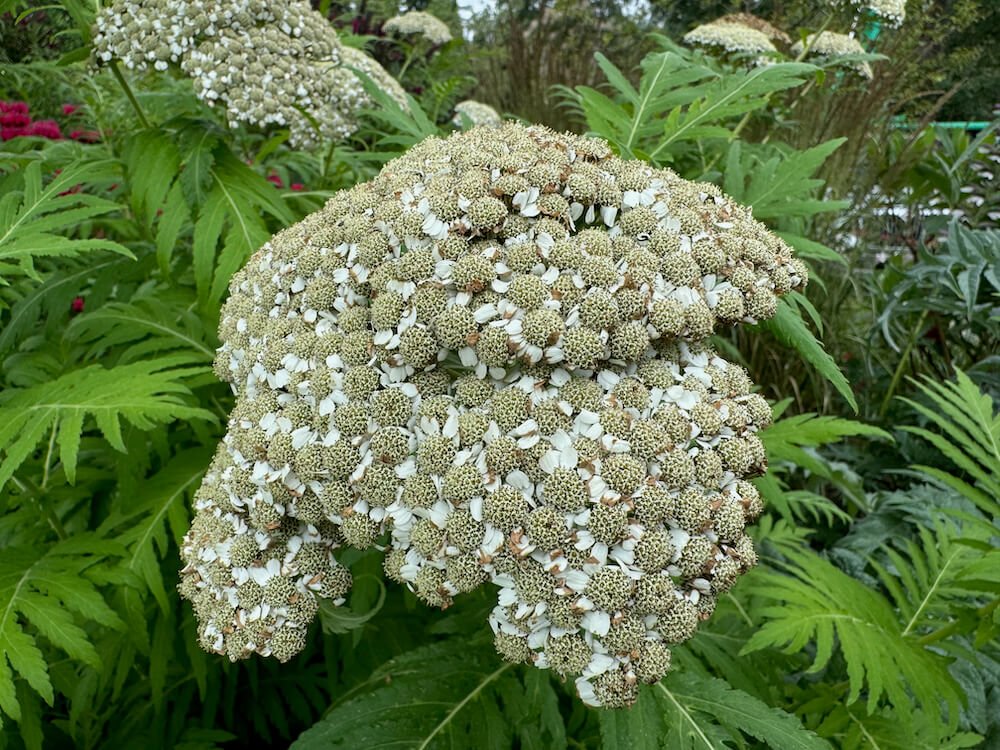 Image 4 of 5
Image 4 of 5

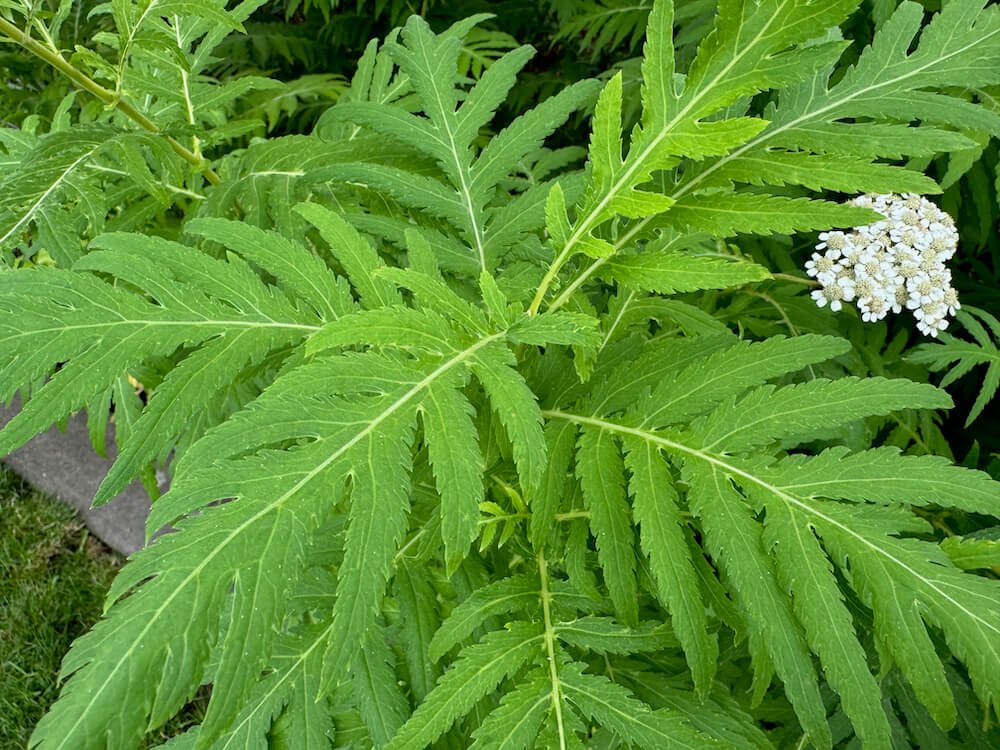 Image 5 of 5
Image 5 of 5

Tanacetum macrophyllumRayed Tansy
DESCRIPTION
Tanacetum macrophyllum, commonly known as Rayed Tansy, is a hardy perennial prized for its attractive, fern-like foliage and clusters of small, white, button-like flowers. Blooming from mid-summer to early fall, this plant produces flat-topped clusters of densely packed flowers that provide a striking contrast against its deep green, deeply divided leaves. The aromatic foliage adds texture and visual interest to garden landscapes, while the flowers attract pollinators such as bees and butterflies.
Native to southeastern Europe and western Asia, Tanacetum macrophyllum is part of the Asteraceae family, known for its resilience and versatility. Its bold, architectural presence and long-lasting blooms make it a valuable addition to perennial borders, cottage gardens, or naturalized areas, where it can bring both texture and color to the landscape.
DESCRIPTION
Tanacetum macrophyllum, commonly known as Rayed Tansy, is a hardy perennial prized for its attractive, fern-like foliage and clusters of small, white, button-like flowers. Blooming from mid-summer to early fall, this plant produces flat-topped clusters of densely packed flowers that provide a striking contrast against its deep green, deeply divided leaves. The aromatic foliage adds texture and visual interest to garden landscapes, while the flowers attract pollinators such as bees and butterflies.
Native to southeastern Europe and western Asia, Tanacetum macrophyllum is part of the Asteraceae family, known for its resilience and versatility. Its bold, architectural presence and long-lasting blooms make it a valuable addition to perennial borders, cottage gardens, or naturalized areas, where it can bring both texture and color to the landscape.
DESCRIPTION
Tanacetum macrophyllum, commonly known as Rayed Tansy, is a hardy perennial prized for its attractive, fern-like foliage and clusters of small, white, button-like flowers. Blooming from mid-summer to early fall, this plant produces flat-topped clusters of densely packed flowers that provide a striking contrast against its deep green, deeply divided leaves. The aromatic foliage adds texture and visual interest to garden landscapes, while the flowers attract pollinators such as bees and butterflies.
Native to southeastern Europe and western Asia, Tanacetum macrophyllum is part of the Asteraceae family, known for its resilience and versatility. Its bold, architectural presence and long-lasting blooms make it a valuable addition to perennial borders, cottage gardens, or naturalized areas, where it can bring both texture and color to the landscape.
-
Family: Asteraceae
Height: 3 to 4 feet
Width: 2 to 3 feet
Foliage color: Green, fern-like leaves
Flower color: White
Bloom time: Mid to late summer
Light requirements: Full sun to partial shade
Water requirements: Moderate; prefers well-drained soil
Maintenance: Low; deadhead spent flowers to encourage blooming
Growing zone: USDA zones 3 to 8
Wildlife attractors: Pollinators like bees and butterfliesThis plant can be seen in the perennial border at the Bellevue Botanical Garden.

